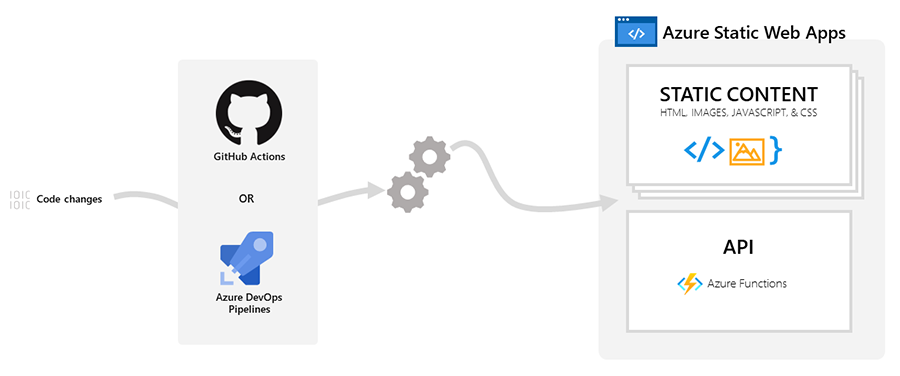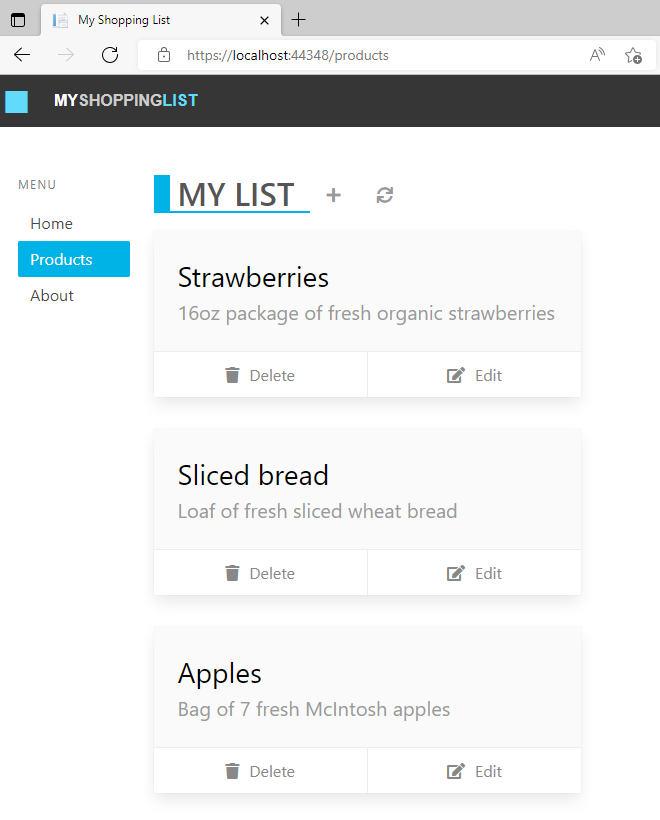Introduction
Your company is launching a shopping list web app. Through the site, customers can add, edit, view, and remove items from their list.
As you build the app, your first concerns are that your app and API are hosted securely, are globally available, and are published automatically. Rather than set up and configure a web server to handle these concerns, you decide to use a hosting solution that serves your assets and API easily, without much setup or configuration.
What is Azure Static Web Apps?
Azure Static Web Apps solves the hard problems all the way from your source code to global availability.
While you stay focused on developing your app, Azure Static Web Apps automatically builds and hosts it from GitHub or Azure DevOps.
Static web apps are commonly built using WebAssembly frameworks such as Blazor and JavaScript frameworks and libraries. These apps include HTML, CSS, JavaScript, and image assets that make up the application. Under a traditional web server architecture, these files are served from a single server alongside any required API endpoints.
With Azure Static Web Apps, static assets are separated from a traditional web server and are instead served from points globally distributed around the world. This distribution makes serving files faster as files are physically closer to end users. API endpoints are hosted using a serverless architecture, which avoids the need for a full back-end server all together.
The model for Azure Static Web Apps is that you get exactly what you need, no more, no less.

When you create an Azure Static Web Apps resource, Azure sets up a GitHub Actions or Azure DevOps workflow in the app's source code repository. The workflow monitors a branch of your choice. Every time you push commits or create pull requests into the watched branch, the workflow automatically builds and deploys your app and its API to Azure.
Azure hosts and serves your web app while Azure Functions powers back-end API functionality, which provides automatic scaling out and scaling in based on demand to the API.
Key features
- Globally distributed web hosting puts static content like HTML, CSS, JavaScript, and images closer to your users.
- Integrated API support provided by Azure Functions.
- First-class GitHub and Azure DevOps integration that triggers builds and deployments with each repository change.
- Free SSL certificates, which are automatically renewed.
- Unique preview URLs for previewing pull requests
Learning objectives
In this module, you create, modify, and deploy a web app and API to Azure Static Web Apps.
This module provides a sample Blazor application, and an API written in C#.
What you'll do
Once you choose your client application, you'll:
- Build and run your Blazor application.
- Create your API with Azure Functions.
- Modify your web app to make HTTP requests to your API.
- Automatically build and deploy your web app to Azure from a GitHub repository with GitHub Actions.
- Finally, you explore and launch your application.

Next steps
Right about now you might be thinking you need to create the Azure resources first, but Azure Static Web Apps has your daily workflow in mind. A more natural approach is to start with the code in GitHub first, before creating resources in Azure.